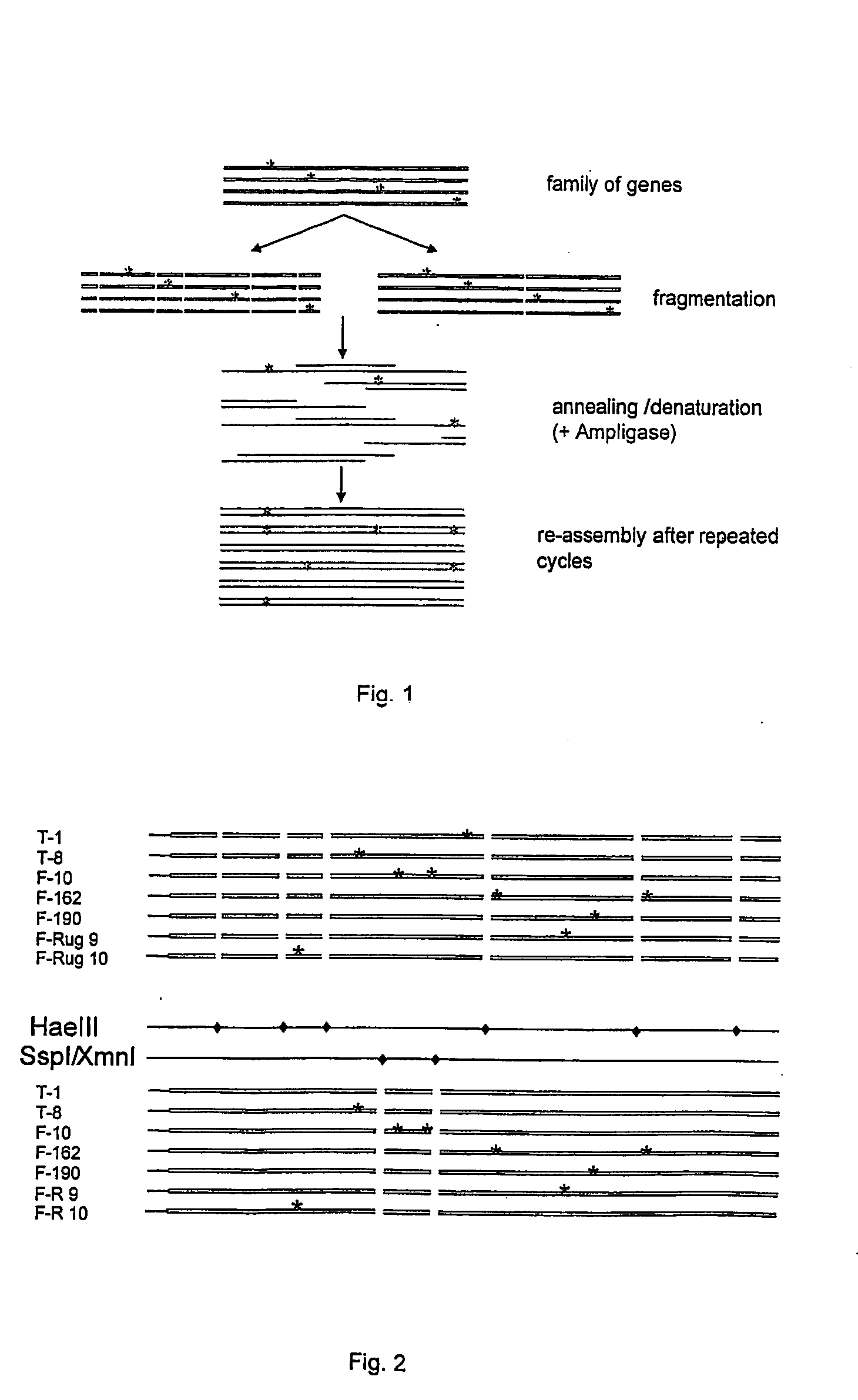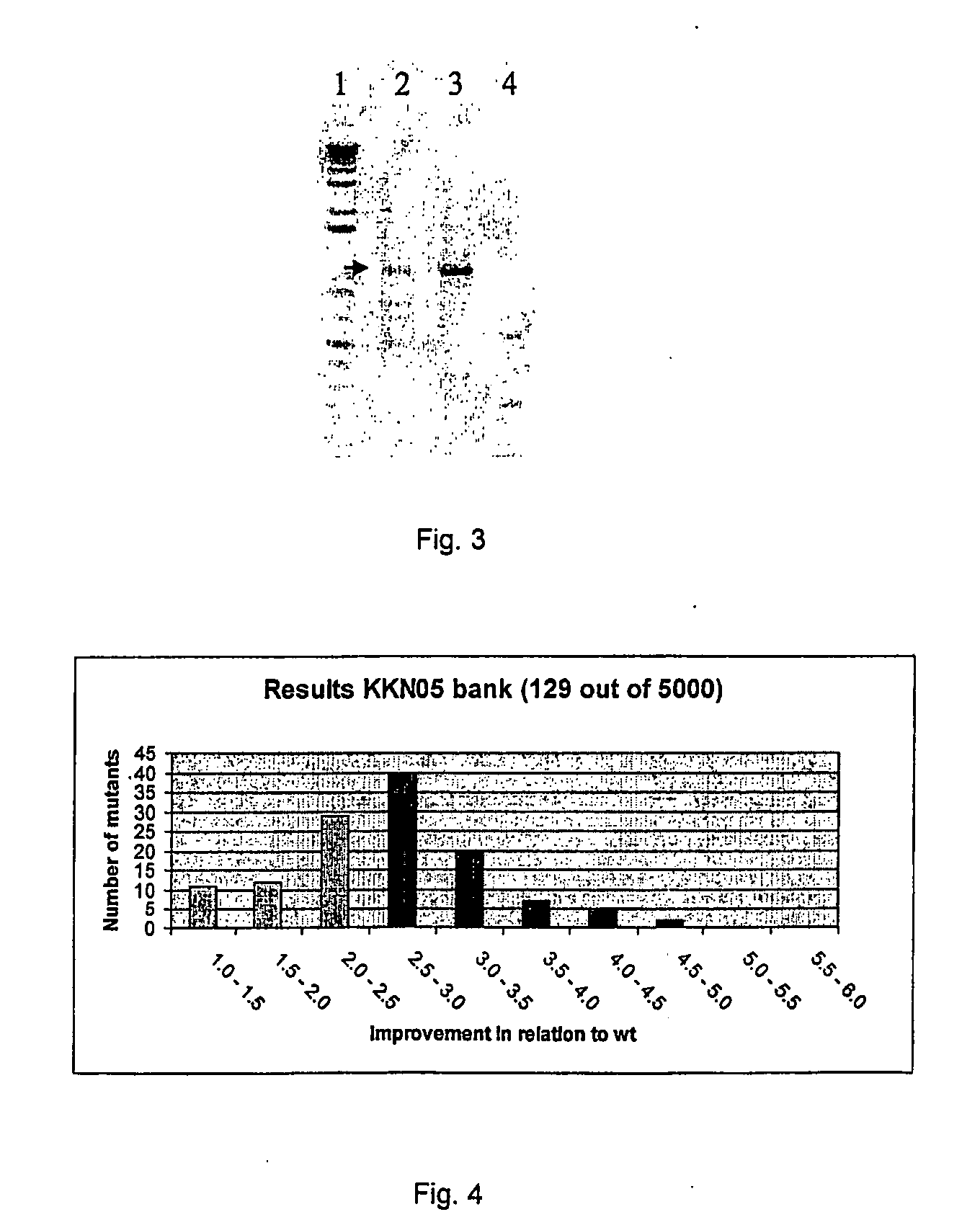Process for preparing variant polynucleotides
a technology of polynucleotide and process, which is applied in the field of process for preparing variant polynucleotides, can solve the problems of not being able to model, many attempts to alter the properties of enzymes by this approach have failed,
- Summary
- Abstract
- Description
- Claims
- Application Information
AI Technical Summary
Benefits of technology
Problems solved by technology
Method used
Image
Examples
example 1
Preparation and Screening of an Error-Prone Library of O. anthropi L-Amidase
[0044] An error-prone PCR was performed on the Ochrobactrum anthropi L-amidase gene (see SEQ ID No 1) using the Diversify™ PCR Random Mutagenesis kit from Clontech (Palo Alto, Calif. USA) according to the manufacturer's instructions. The PCR products were cloned in the EagI / HindIII sites of the vector pBAD / Myc-H is C (Invitrogen Corporation, Carlsbad, Calif. USA) and transformed to E Coli Top10F cells (Invitrogen Corporation, Carlsbad, Calif. USA). Clones were first screened on MTP and CFE's of a subset of clones were further screened (see Experimental). Improved mutants were sequenced to determine the modified position(s). The modified positions of seven improved mutants are indicated hereinafter: V52A, F93V, T143A, T193P, N212D, N981 / L124P, K138R / G234V (see SEQ ID No 2).
example 2
Recombination of improved mutants by BERE recombination
[0045] An oultline of the blunt-ended restriction enzyme (BERE) method is given in FIG. 1.
[0046] DNA of the seven mutant L-amidase genes as described in Example 1 was either digested with XmnI / SspI or with HaeIII. Two out of the total nine mutations were still located on one fragment after restriction enzyme fragmentation and therefore could not be recombined separately (see FIG. 2).
[0047] The fragments of both digestions were mixed and used for a reassembly reaction using Ampligase (Epicentre Technologies, Madison, Wis. USA). As can been seen in FIG. 3, already after 15 cycles of denaturation and annealing a DNA of the appropriate size appears.
[0048] The DNA product of the Ampligase-induced reassembly reaction was subsequently used as template for an error-prone PCR (EP-PCR).
[0049] For this experiment mild EP conditions designed to generate an average of around 1 basepair substitution per gene were used. The DNA products ...
PUM
| Property | Measurement | Unit |
|---|---|---|
| concentration | aaaaa | aaaaa |
| concentration | aaaaa | aaaaa |
| concentration | aaaaa | aaaaa |
Abstract
Description
Claims
Application Information
 Login to View More
Login to View More - R&D
- Intellectual Property
- Life Sciences
- Materials
- Tech Scout
- Unparalleled Data Quality
- Higher Quality Content
- 60% Fewer Hallucinations
Browse by: Latest US Patents, China's latest patents, Technical Efficacy Thesaurus, Application Domain, Technology Topic, Popular Technical Reports.
© 2025 PatSnap. All rights reserved.Legal|Privacy policy|Modern Slavery Act Transparency Statement|Sitemap|About US| Contact US: help@patsnap.com


